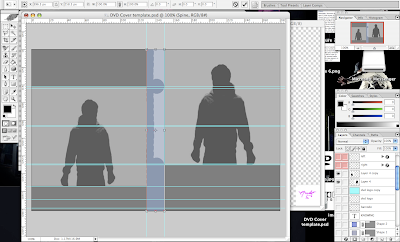In what ways does your media products use, develop or challenge forms and conventions or real media products?
To create any professional media product, the content and the look must be the same as that in industry, in my case the ‘music industry’. Our promo package for the band/artist we had chosen was a music video, a DVD cover for this video and a magazine advert for a magazine of an appropriate style. To achieve this, I had to research what music videos (especially that of the same genre) use to create the look they have. My primary source of research was simply choosing music videos I enjoyed (if I enjoyed them, it meant they are ‘good’), that are of similar genres to my own, this was UK hip-hop. The main artist I researched was Tinchy Stryder, a successful British UK hip hop/ R n B rapper, who’s videos are shown regularly on channels such as MTV, Kiss, 4Music, box, Viva and other high profile music channels. Due to this fact, the way I set out to achieve the most professional look possible was to base my own music video on what made Tinchy Stryder’s so appealing but how they represented him.
Through researching multiple videos and artists within the same genre I picked up the type of shots and editing techniques that are used frequently (quickly edited close up/medium shots, sometimes on a cantered angle) the amount and choice of colours (colours that match the artist’s clothing and representation e.g. a green colour filter over a hoodie that previously had green text design). The costume design in videos for the grime/hip hop genre is very similar, using t-shirts and hoodies that have the hook of the song or the artist’s name/nickname e.g. star in the hood t-shirts for Tinchy Stryder’s videos. The common choice of set was the blank room idea, where a green screen would be used, with a background of the director’s choice.
When constructing my own video I followed these conventions of the professional music videos I researched. Due to the genre, the narrative of the artist in my video was rapping/singing to the audience, which meant the shot types and actions of the artist had to follow this (close up and medium shots of the artist and direct address, rapping into the camera). 

As a result, I only used two media theories. I expressed Claude Levi Strauss’s ‘binary opposites’. The theory, in basic form, is concerning structuralism, for example up and down. In my own case it was how I created the verse and chorus, with the opposite setting and visual effects. For my chorus I filmed in a green screen with a black and white effect.

This is opposed in my verses as I filmed at an out door location with no colour effects, resulting in a significant difference between the two. The second media theory I included was the ‘semic code’. This is the accumulation of connotations, for example if a character is wearing a red dress, the connotations are that she is romantic or dangerous, this is because of our cultural representation towards the colour red. The same is done in my own video, where the artist is wearing casual clothes, hoodies and jumpers with “junk star kids” printed boldly on the front. Immediately this represents the hip-hop scene as it is copied through out other videos in the same scene.

My artist also wore big headphones with a body warmer which again is connoted with the hip-hop scene creating a meaning though clothes/accessories, simply because of the image that is portrayed of artists in this scene through out the world, just as white make-up and black clothing is connoted with ‘emos’. This theory, when referring to certain groups now is expanded to the cultural code, referring symbols to a specific culture not just an attitude, for example hand actions and movement. 
The artist ‘Junk Star Kids’ (‘Kids’ for short) belongs to an upcoming hip-hop scene within the UK. The genre is commonly known as ‘grime’, with associated artists such as Dizzee Rascal, Tinchy Stryder and chipmunk. This genre and the scene within it, has a particular representation and is based a lot on specific images and backgrounds. The UK hip-hop scene is a gritty and urban but also real genre. With songs in the past describing the hard life on the streets of England, for example (Dizzee Rascals- “Jus’ a rascal”) the mainstream influence has not affected grime as much in he past, however, there has been a recent significant increase explosion in the use of ‘auto-tune’ and ‘vocoders’, a technique developed in the 90s to electrify an artists voice (first used by Cher). The effect has constantly been over used within the music industry applied on artists such as ‘Timberland’, ‘Jason Derulo’, ‘Kano’, and many more. Due to the fact that these are mainstream and successful artists, it has had an influence on the grime scene artists, including my own. This has lead to a particular image, an urban and gritty, but now well produced, style of artist.
Along with using similar styles within the track my artist used, the representation is also similar. The common perception with UK hip-hop is ruff or dangerous, with most music videos set in a council estate or a run down area. However due to the development in technology and also the increase in influence from the main stream videos, the use of green screens and blank white rooms are incorporated. With my video I mirrored the two styles, setting the verses in urban looking areas for example a run down car park and brick walls and then sampling the blank white background (using a green screen) for the chorus and drum fill. The shot types for the urban style verses were most frequently medium long shots as the mise en scene represented the grime within the artist, this meant I could use a variety of shots as in my chorus I used close ups. The reason I switched to using close ups and medium close ups in the chorus was to add emotion directly expressed from the artist, also the background was just white which has no emotion for itself.
As I based my video on the two types of grime/UK hip-hop videos, it both challenges and matches conventions of the industry. When constructing my video, I first created a version with outdoor scenery,
but I then created a second version with a green screen

. Finally when researching further which I select to move forward with, I decided to merge the two videos together. I selected the outdoor video to be my verse, this was due to the fact that it was rapping in the verse, which needed a more aggressive approach than the chorus, as the chorus is auto-tuned singing, which was the reason I chose the white back ground being more relaxed. This challenges common videos seen on music channels because there is not another video of the same genre that uses both ‘outdoor urban scenery’ footage and green screened white room footage. However other videos use either ‘outdoor urban scenery’ or green screened white room footage separately, this is supporting the conventions of UK hip-hop music videos. Finally the video does develop the conventions of UK hip-hop as it combines the two types of videos within the same genre, which has not yet been seen before.

















































